If you want to know about the Islamic architecture or staircase design or landscape garden, please click the link.
Introduction
Leonardo da Vinci (1452-1519) was an Italian artist, scientist, and inventor known for his mastery of painting, drawing, and sculpture, as well as his diverse interests in fields such as anatomy, engineering, and architecture.
He is considered one of the greatest artists and thinkers of the Renaissance, a period of significant cultural, scientific, and artistic advancements in Europe.
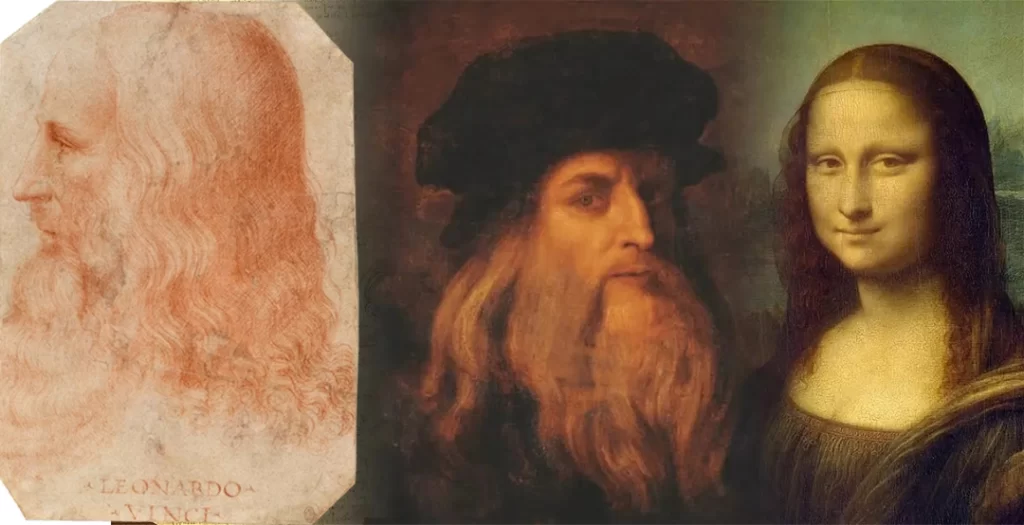
Leonardo’s notable achievements include his masterful paintings such as the Mona Lisa and The Last Supper, as well as his scientific studies and inventions such as his designs for flying machines, military weapons, and hydraulic systems.

He is also known for his notebooks, which contain detailed drawings and notes on a wide range of topics, including human anatomy, geology, botany, and physics.
Leonardo’s impact on art, science, and culture is profound and enduring. He is regarded as a pioneer of the High Renaissance style, which emphasized balance, harmony, and realism in art.
His scientific studies and inventions influenced many later thinkers and inventors, and his ideas on subjects such as anatomy and optics continue to inform scientific research today.
He also played a key role in the development of the Italian language and literature, and his legacy continues to inspire artists and thinkers around the world.
1) Early Life and Education
Leonardo da Vinci was born out of wedlock on April 15, 1452, in the Tuscan town of Vinci, Italy, to a notary named Ser Piero and a peasant woman named Caterina.
Leonardo’s family was relatively wealthy and had connections to Florence’s ruling Medici family, but his illegitimacy prevented him from receiving a formal education or pursuing a career in the church or government.
Instead, Leonardo’s early education was informal and focused on practical skills such as drawing, painting, and music. He spent much of his childhood in his father’s house in Vinci and later moved to Florence, where he became an apprentice in the workshop of Andrea del Verrocchio, a prominent artist and craftsman.
Under Verrocchio’s tutelage, Leonardo honed his skills as a painter, sculptor, and metalworker, and learned the techniques of perspective, anatomy, and chiaroscuro (the use of light and shadow to create the illusion of depth).
He also worked on various collaborative projects with Verrocchio, including the Baptism of Christ, a painting in which Leonardo is said to have painted the angel in the background.
As a young artist, Leonardo began to develop his own interests and styles, experimenting with new techniques and subject matters. Some of his early works include paintings such as the Annunciation and the Adoration of the Magi, as well as drawings and sketches of plants, animals, and human anatomy.
Leonardo’s early works also reflect his interest in scientific and technological innovations, such as his designs for flying machines and military weapons. His notebooks from this period contain detailed drawings and notes on a wide range of topics, including human anatomy, geology, botany, and physics, which would later inform his artistic and scientific pursuits.
2) Artistic Career
Leonardo da Vinci’s style and technique as an artist were characterized by his innovative approach to composition, use of chiaroscuro, and attention to detail.
He sought to create lifelike and naturalistic representations of his subjects, often using models and observation to achieve accuracy in his work. His paintings are also known for their soft, sfumato (blended) edges and a subtle gradation of light and shadow.
Leonardo’s major works include some of the most iconic and celebrated pieces of art in history. The Mona Lisa, also known as La Gioconda, is a portrait of a woman widely believed to be Lisa Gherardini, the wife of a Florentine merchant. The painting is known for its enigmatic smile and the subtle play of light and shadow in the background.
The Last Supper is a mural painting depicting Jesus and his disciples at the Last Supper, which is famous for its dramatic composition, use of perspective, and the intricate symbolism of each figure’s gesture and expression.
Leonardo’s other notable works include The Annunciation, a painting of the angel Gabriel announcing the coming of Jesus to the Virgin Mary, and The Vitruvian Man, a drawing of a man in perfect proportion to his surroundings that reflects Leonardo’s fascination with anatomy and proportion.
Leonardo’s influence on art history and the Renaissance cannot be overstated. He is considered a master of the High Renaissance, a period of artistic and cultural flourishing in Europe, and his approach to painting and drawing influenced many other artists of the time and beyond.
His attention to detail, use of light and shadow, and naturalistic approach to composition continue to inspire artists to this day. Leonardo’s scientific and technical innovations also influenced other fields, such as engineering, mathematics, and physics, and his notebooks remain a valuable source of knowledge and inspiration for scientists and artists alike.
3) Most notable works
Leonardo da Vinci was one of the most influential artists of the Renaissance period, known for his masterful works in painting, sculpture, and engineering.
His paintings are characterized by their realism, depth, and use of light and shadow, and his engineering designs were often far ahead of their time. Here’s a brief overview of some of his most notable works:
The Mona Lisa
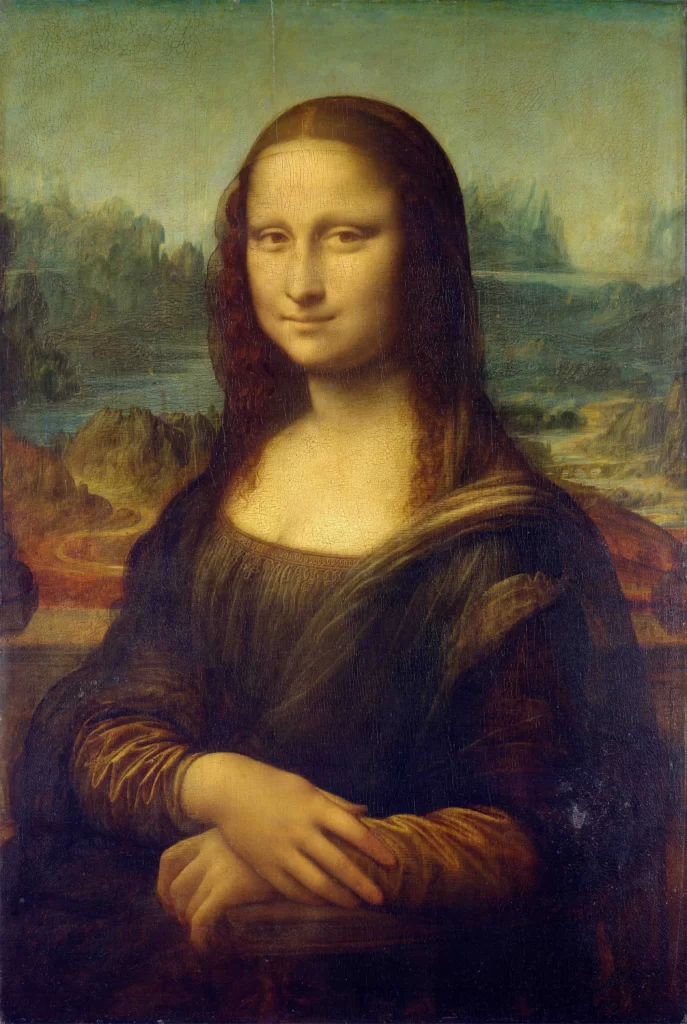
This painting is perhaps Leonardo’s most famous work, and one of the most recognizable paintings in the world. It depicts a woman with a mysterious smile, whose identity remains a subject of speculation to this day.
The Last Supper

This painting is a fresco that depicts the scene of the Last Supper, in which Jesus announces that one of his disciples will betray him. The painting is known for its striking composition and use of perspective.
Vitruvian Man
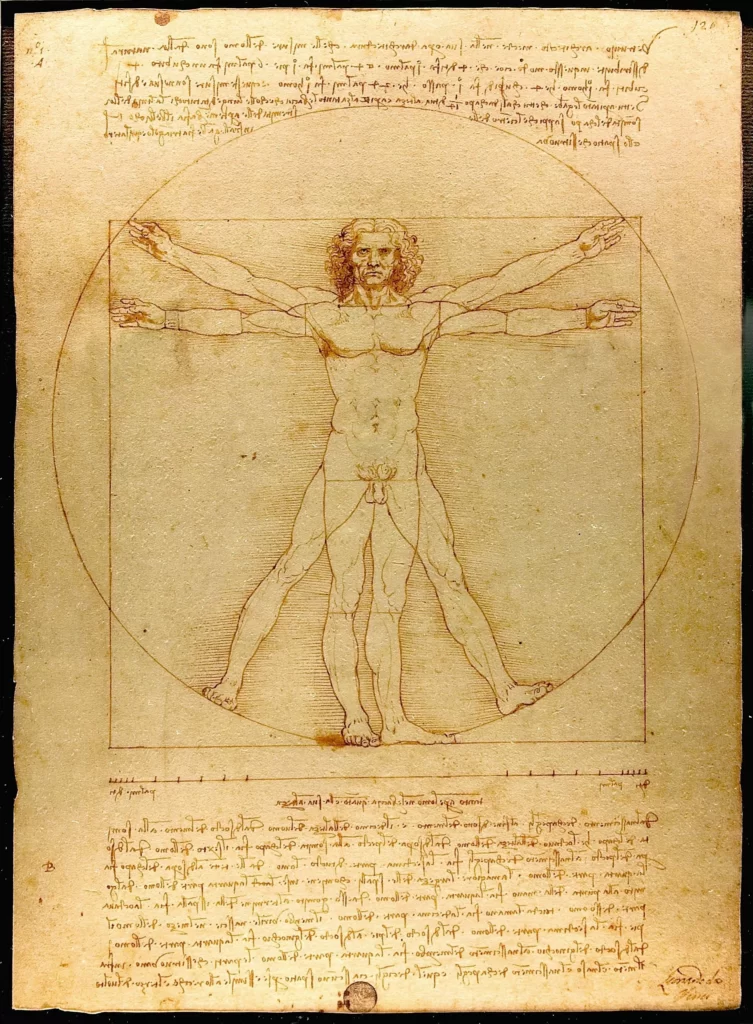
This is a drawing that depicts the proportions of a human figure according to the ancient Roman architect Vitruvius. The drawing is known for its precision and its portrayal of the human form as a reflection of cosmic harmony.
The Annunciation
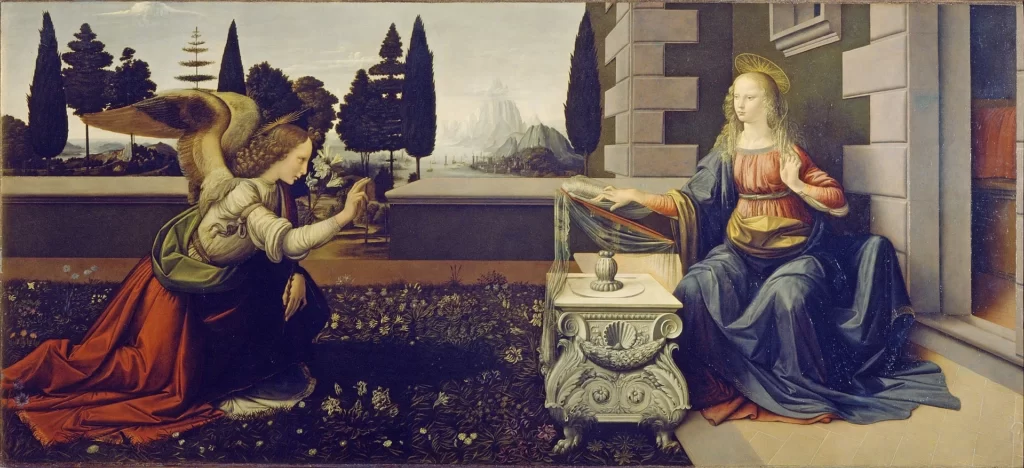
This painting depicts the moment when the angel Gabriel announces to the Virgin Mary that she will give birth to Jesus. The painting is known for its beautiful colors and its serene, contemplative mood.
The Baptism of Christ
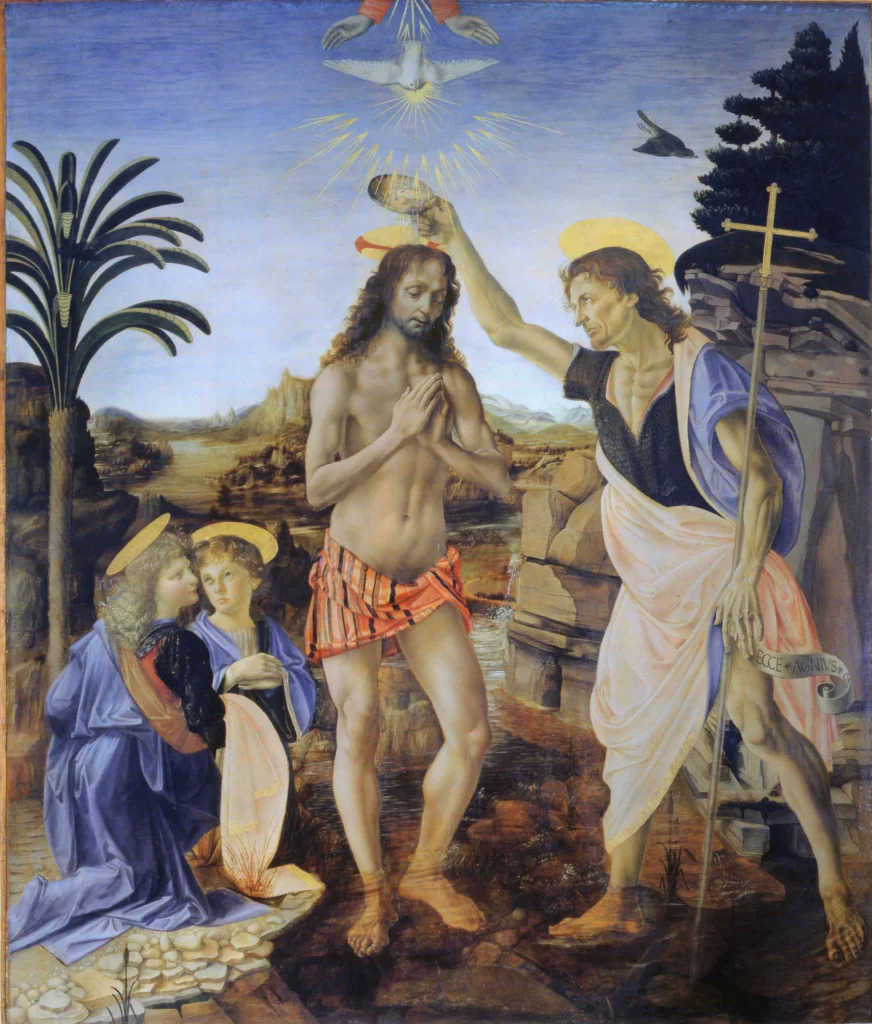
This painting depicts the baptism of Jesus by John the Baptist. The painting is known for its dramatic use of light and shadow, and for its portrayal of the human figure in motion.
Throughout his life, Leonardo produced a vast number of sketches, notes, and drawings on various subjects, including anatomy, engineering, and astronomy.
His notebooks, known as the Codices, are a testament to his curiosity and his dedication to the pursuit of knowledge.
Leonardo’s works continue to inspire and fascinate people today, and his legacy as an artist, inventor, and scientist remains a powerful influence on modern culture.
4) Scientific Interests
Leonardo da Vinci’s scientific interests and achievements were as impressive as his artistic achievements. He had a curious mind and was fascinated by the natural world and how things worked. He made numerous contributions to fields such as anatomy, engineering, mathematics, and physics.
One of Leonardo’s most significant scientific achievements was his study of human anatomy. He dissected numerous corpses to study the human body’s structure, systems, and functions. He recorded his observations and sketches in his notebooks, which are still considered masterpieces of scientific illustration. His drawings and notes on anatomy provided a basis for later medical research and understanding of the human body.
Leonardo was also a prolific inventor and designer, creating concepts for flying machines, military weapons, and other inventions. His flying machine designs included a glider that he tested himself, a helicopter-like device, and a bird-like contraption. He also designed a parachute, a machine gun, and a submarine, among many other inventions.

Leonardo’s impact on science and technology is far-reaching. His designs and inventions laid the groundwork for later innovations, and his approach to observation, experimentation, and innovation has influenced scientists and inventors for centuries.
His notebooks remain a valuable source of information and inspiration for fields such as engineering, architecture, and medicine. Leonardo’s legacy as a polymath, combining art and science, continues to inspire individuals to pursue interdisciplinary studies and creative problem-solving.
5) Contribution of Leonardo da Vinci in the field of architecture
Although Leonardo da Vinci is best known for his contributions to art and science, he also made notable contributions to the field of architecture. His interest in architecture was evident in his studies of perspective and his design of several structures.
Leonardo’s approach to architecture was influenced by his understanding of geometry, proportion, and mechanics. He believed that architecture should be functional and beautiful, blending form and function. He also sought to integrate art and science in his architectural designs.
One of Leonardo’s most notable architectural designs is the Church of San Giovanni in Florence. Although the design was never realized, it reflected Leonardo’s interest in creating harmonious and proportionate spaces.
He also designed a number of military fortifications and bridges, including a bridge that was designed to be quickly assembled and disassembled for military purposes.
In addition to his designs, Leonardo also wrote extensively about architecture, including his thoughts on proportion, perspective, and the use of light and shadow in creating spatial effects. His writings on architecture were influential, and his approach to integrating art and science in architectural design has been an inspiration for architects for centuries.
In summary, Leonardo da Vinci’s contributions to architecture include his designs for structures such as the Church of San Giovanni and his writings on architecture. His understanding of geometry, proportion, and mechanics influenced his approach to architectural design, and his ideas on integrating art and science continue to inspire architects to this day.
6) Notable works in the field of architecture
Leonardo da Vinci made several notable works in the field of architecture, including designs for buildings, bridges, and military fortifications. Some of his most significant works in this field include:
- The Church of San Giovanni: Leonardo’s design for this church in Florence incorporated classical elements such as a circular dome and columns, as well as more innovative elements such as an octagonal sanctuary. The design was never realized, but it is considered a significant example of Renaissance architecture.
- Military fortifications: Leonardo designed a number of military fortifications for various cities, including Cesena and Piombino. His designs incorporated innovative elements such as angled walls and bastions, which were intended to make the fortifications more effective at withstanding attacks.
- Bridges: Leonardo designed several bridges during his career, including a bridge that was designed to be quickly assembled and disassembled for military purposes. He also designed a bridge for the city of Istanbul, but this design was never realized.
- City planning: Leonardo was interested in the layout and design of cities, and he made several plans for cities such as Milan and Venice. His plans incorporated elements such as wide streets and canals, which were intended to improve the flow of traffic and commerce.
In addition to these specific works, Leonardo also wrote extensively on architecture, including his thoughts on proportion, perspective, and the use of light and shadow in creating spatial effects.
His writings on architecture were influential, and his approach to integrating art and science in architectural design has been an inspiration for architects for centuries.
6) Controversies and Debates
There are several controversies and debates surrounding Leonardo’s life and work, and they continue to generate discussion and speculation among scholars and art historians. Here are a few examples:
- The attribution of certain paintings to Leonardo There is ongoing debate about whether certain paintings, such as the “Salvator Mundi” and the “La Bella Principessa,” were actually painted by Leonardo. Some experts argue that there is evidence of his hand in these works, while others are more skeptical. The debate over attribution highlights the difficulty of determining the authorship of works from the Renaissance period, when apprentices and collaborators often contributed to paintings.
- The extent of Leonardo’s involvement in certain projects There is debate about how involved Leonardo was in certain engineering and architectural projects, such as the construction of the Milan Cathedral or the design of the Ottoman Empire’s bridge over the Golden Horn. Some argue that Leonardo played a key role in these projects, while others suggest that his involvement was more limited. This debate highlights the challenge of reconstructing historical events and determining the contributions of individual figures.
- The nature of Leonardo’s relationships with other artists and patrons There is debate about the nature of Leonardo’s relationships with other artists, such as Michelangelo and Raphael, and with his patrons, such as the Medici family. Some argue that these relationships were collaborative and supportive, while others suggest that they were fraught with competition and tension. This debate sheds light on the complex social dynamics of the Renaissance period, and the ways in which artistic and political alliances shaped the production of art.
Different perspectives on these controversies reflect varying approaches to the study of art history and the interpretation of historical evidence. Some scholars prioritize formal analysis of artworks, while others focus on the biographical and social context of artists’ lives.
Similarly, some scholars emphasize the role of individual genius and artistic innovation, while others stress the importance of collaborative and collective processes.
Ultimately, debates and controversies surrounding Leonardo’s life and work demonstrate the ongoing relevance and richness of Renaissance art and culture.
7) Legacy and Impact
Leonardo da Vinci’s work has had a profound impact on art, science, and culture, and his legacy continues to inspire and influence people today. Here are a few examples of his lasting impact:
- Artistic techniques and styles Leonardo’s use of sfumato (the technique of blending colors to create a soft, hazy effect), his use of perspective, and his attention to naturalistic detail have had a lasting impact on Western art. His works continue to be studied and admired for their beauty and technical mastery, and have inspired countless artists throughout the centuries.
- Scientific inquiry and invention Leonardo’s notebooks are a testament to his curiosity and his scientific knowledge, covering subjects ranging from anatomy to astronomy to engineering. His inventive ideas, such as flying machines and armored vehicles, were far ahead of their time and have influenced the development of modern technology.
- Cultural references and homages Leonardo’s fame and influence have inspired numerous cultural references and homages, from Dan Brown’s novel “The Da Vinci Code” to the character of Donatello in the “Teenage Mutant Ninja Turtles” franchise. His name has become synonymous with genius and innovation, and his works continue to be celebrated and admired around the world.
- Influence on future artists and scientists Leonardo’s influence on future artists and scientists cannot be overstated. His innovative ideas and technical mastery have inspired generations of artists, from the Renaissance to the present day. His scientific curiosity and inventive spirit have also influenced the development of modern science and technology, inspiring scientists and engineers to push the boundaries of what is possible.
In conclusion, Leonardo da Vinci’s work has had a lasting impact on art, science, and culture, and his legacy continues to inspire and influence people today.
His influence on future artists and scientists, as well as his cultural significance, have cemented his place as one of the greatest figures in Western history.
8) Conclusion
In conclusion, Leonardo da Vinci was a true Renaissance man whose work and ideas have had a profound impact on art, science, and culture. His artistic genius and technical mastery continue to inspire and influence artists today, and his innovative ideas and scientific curiosity have influenced the development of modern technology and science.
While controversies and debates surrounding his life and work persist, his lasting legacy is a testament to his enduring influence and significance.
Leonardo da Vinci will always be remembered as one of the greatest figures in Western history, and his contributions to human knowledge and creativity will continue to be celebrated for centuries to come.